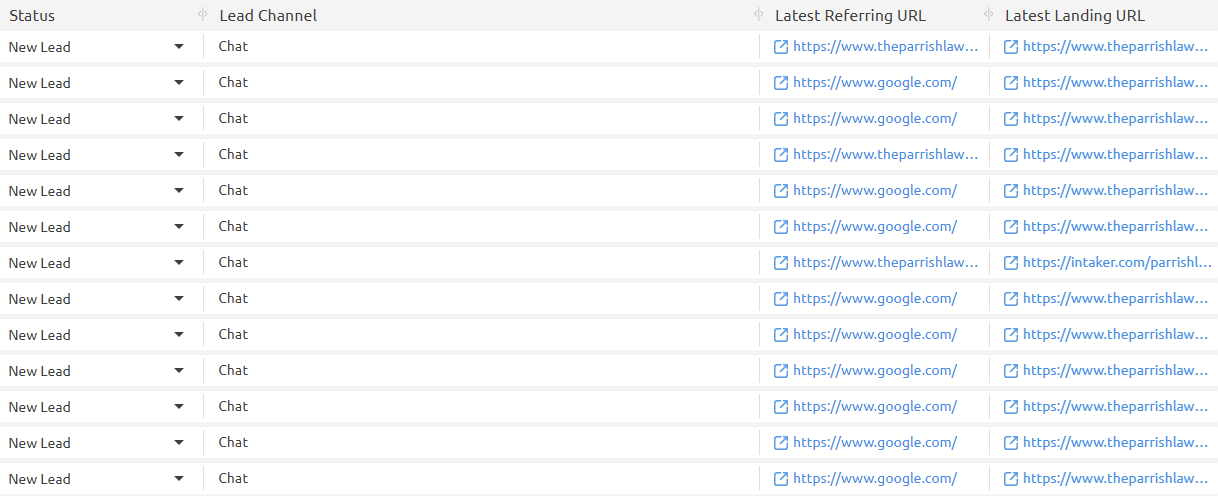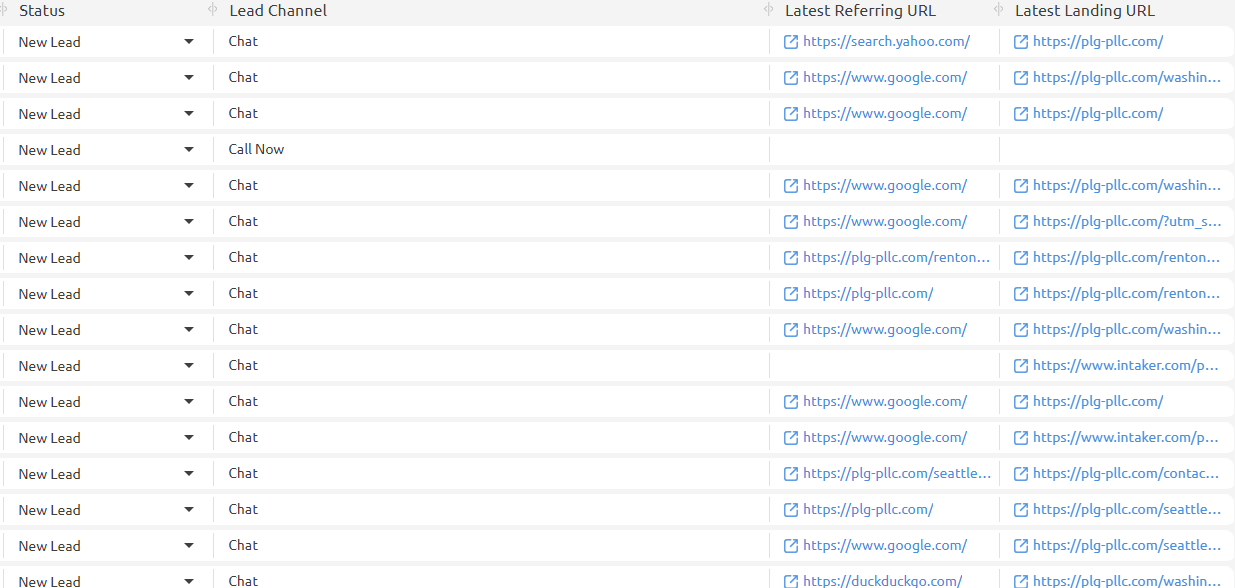Unlock the Hidden Marketing Data Inside Every Form Lead
There's a gold mine of marketing data hiding in your law firm's website forms. Learn how you can uncover this data and leverage it to get high-value leads for your practice.
In the olden days of the 2010s, when someone visited a law firm’s website, there was a 95% chance that they started their search on Google. That’s my own estimate, but I’ve also had my nose in law firm marketing data for a really long time. I hope you’ll take me at my word.
Back then, most people contacted law firms via Google Search. Even if they were referred by someone else, the common path to that first phone call started with Google, where they typed in your brand name and called your Google Business Profile number.
Fortunately, times are changing.
Today, leads are coming from all over the Internet. ChatGPT has disrupted the search market and has lessened Google’s stranglehold. Law firms are seeing more leads from alternative search channels, including ChatGPT, and now 95% of our forms aren’t coming from the search behemoth.
In this article, I’m going to take you through:
The reason why you should track where your forms and chats are coming from,
How you can use automation and Gen-AI tools to tag marketing sources automatically and,
What you can do with the data
Before we get to the cool stuff, I want to address a common complaint I receive about forms and chats, because I know you're already thinking it:
Form leads are usually junk.
Why Track Forms When the Leads Are “Low Value”
When I talk to intake teams about forms, they usually say:
The leads usually don’t have good cases
They never return our calls
Most are spam
In short, form and chat leads typically represent people NOT committed to hiring attorneys.
Forms and chat widgets are low-barrier, low-commitment ways of getting some kind of feedback on their case (which is why case calculators are so popular).
People with urgent legal issues will usually call instead of wasting time waiting for a call-back.
However, both good and bad client leads discover your law firm using the same methods.
It can be easy to dismiss data from forms or chats because the leads are often underwhelming. It’s almost logical to say, “We don’t care how bad leads find us; we only want the good ones,” but that’s ignoring the plain fact that most people don’t understand their own legal issue.
They don’t know:
What type of attorney they need
If they can afford one
The best way to research law firms
Good leads are as clueless as the bad ones.
And, they all take the same paths to find your firm.
The difference lies in their level of commitment: people who hire attorneys typically call law firms. That hasn’t changed.
But, we don’t get the same marketing data when someone calls a law firm (as opposed to filling out a form). If we’re lucky, they call a dynamic tracking number that tells us their Internet source.
More often, they call the number the firm uses on Google Business, which is usually the same phone number they use across the Internet.
BUT… people who fill out forms/chats are handing that information to us. Through form fills, we can gain a better understanding of the paths all our potential clients use.
The Data Hidden in a Form Submission
Your client’s marketing journey is cloaked in secrecy. We can’t fully know what potential clients do offline, on social media, or even on our own websites. Mandated privacy protections limit the degree to which marketers can track individuals online, and most marketing data is anonymized for security purposes.
However, there are still a few rich sources of marketing data that track individual client journeys. Tracking phone numbers are one.
All my clients use dynamic tracking numbers and CallRail or CallTrackingMetrics to track the source of phone calls. Tracking numbers work well when people use them, but because marketers have pushed for Name, Address, and Phone (NAP), most phone calls are earmarked as “Google."
However, form data doesn’t lie.
Not to be bleak, but when you submit a form on a website, you temporarily forfeit your privacy. Your form submission contains the personal information you provided, plus data about:
Keep reading with a 7-day free trial
Subscribe to Legal Marketing Strategies from Sharp Cookie to keep reading this post and get 7 days of free access to the full post archives.



